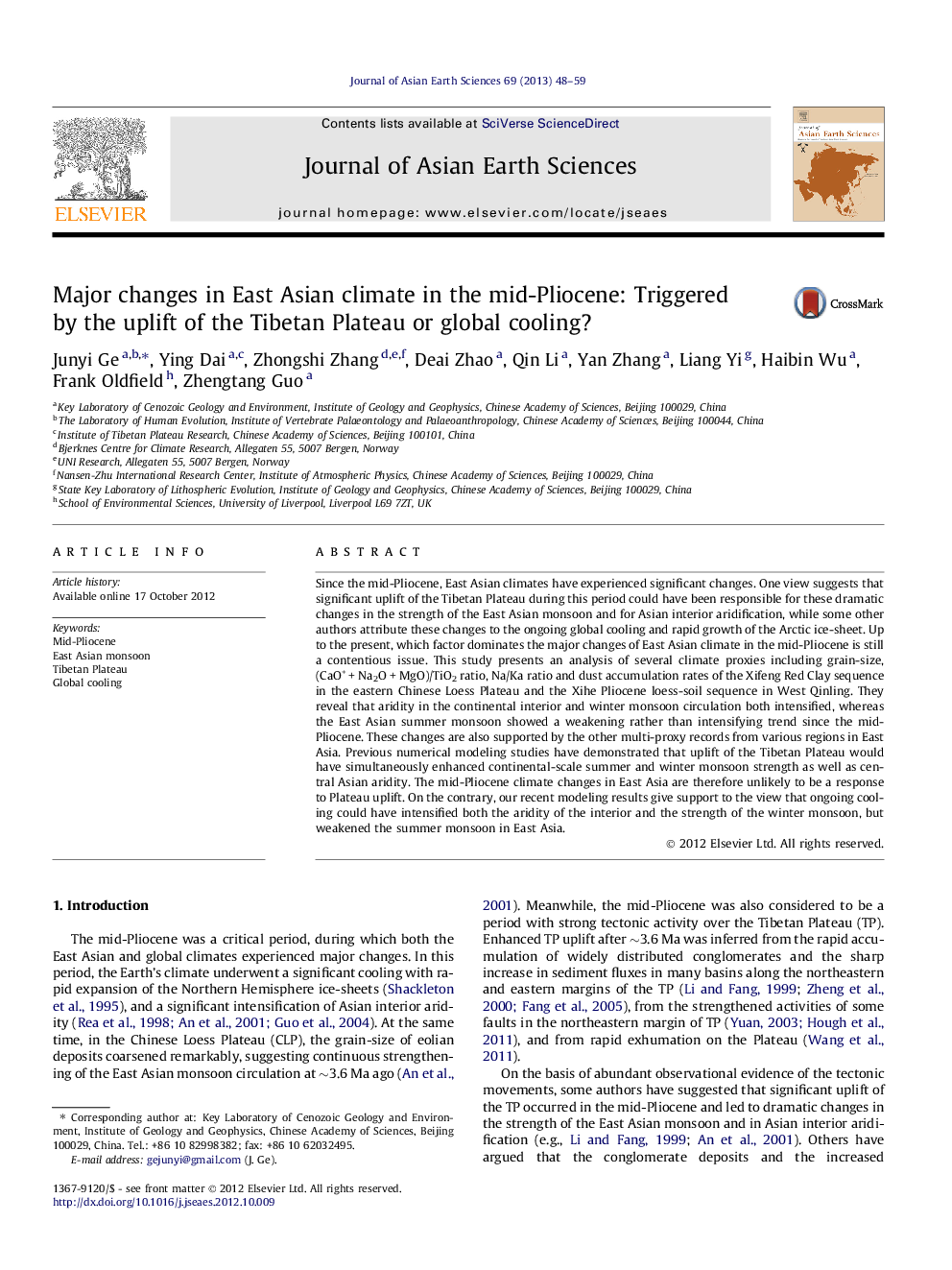| کد مقاله | کد نشریه | سال انتشار | مقاله انگلیسی | نسخه تمام متن |
|---|---|---|---|---|
| 4731103 | 1640397 | 2013 | 12 صفحه PDF | دانلود رایگان |
Since the mid-Pliocene, East Asian climates have experienced significant changes. One view suggests that significant uplift of the Tibetan Plateau during this period could have been responsible for these dramatic changes in the strength of the East Asian monsoon and for Asian interior aridification, while some other authors attribute these changes to the ongoing global cooling and rapid growth of the Arctic ice-sheet. Up to the present, which factor dominates the major changes of East Asian climate in the mid-Pliocene is still a contentious issue. This study presents an analysis of several climate proxies including grain-size, (CaO* + Na2O + MgO)/TiO2 ratio, Na/Ka ratio and dust accumulation rates of the Xifeng Red Clay sequence in the eastern Chinese Loess Plateau and the Xihe Pliocene loess-soil sequence in West Qinling. They reveal that aridity in the continental interior and winter monsoon circulation both intensified, whereas the East Asian summer monsoon showed a weakening rather than intensifying trend since the mid-Pliocene. These changes are also supported by the other multi-proxy records from various regions in East Asia. Previous numerical modeling studies have demonstrated that uplift of the Tibetan Plateau would have simultaneously enhanced continental-scale summer and winter monsoon strength as well as central Asian aridity. The mid-Pliocene climate changes in East Asia are therefore unlikely to be a response to Plateau uplift. On the contrary, our recent modeling results give support to the view that ongoing cooling could have intensified both the aridity of the interior and the strength of the winter monsoon, but weakened the summer monsoon in East Asia.
► We reconstruct reliable changes of East Asian monsoon and inland aridity of 6–2.6 Ma.
► We show a weakening trend of East Asian summer monsoon since the mid-Pliocene.
► We suggest that mid-Pliocene climate changes are unlikely related with Tibet uplift.
► Our results support that global cooling controls mid-Pliocene climate changes.
Journal: Journal of Asian Earth Sciences - Volume 69, 5 June 2013, Pages 48–59
